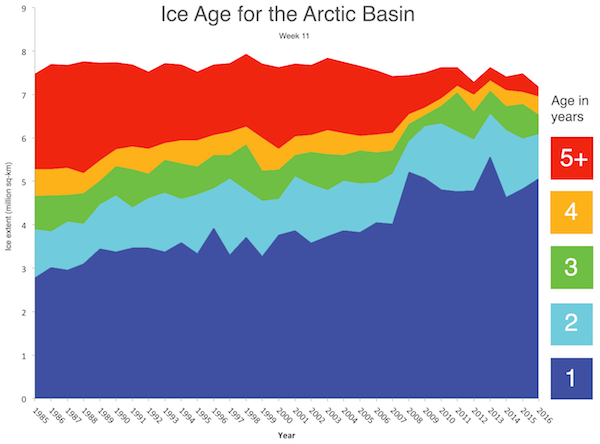
image. (NSIDC courtesy: Boulder, M. Tschudi, C. Fowler,
J. Maslanik, R. Stewart, W. Meier, 2016)
The proportion of multi-year sea ice (MYI) of the total Arctic ice cover has decreased in the last three decades (Maslanik et al., 2007). MYI ice observed a decrease from approx. 75% in 1980s to 45% in 2011. Within the MYI, the proportion of ice older than 4 years decreased from 50% in 1980s to 10% in 2011 (Maslanik et al., 2011). These trends in reduction of MYI are observed throughout the Arctic including central Arctic and Canadian Archipelago where MYI existence is most likely. The decrease in MYI coincides with increase in First-year ice (FYI), and second-year ice has also seen some recovery as a result (NSIDC, 2016). In general, however, the older the ice is the more likely it is that it is decreasing in quantity. Satellite derived records of sea ice categorized on the basis on ice age from 1985 to 2016 demonstrate a continuous decline in old ice types (MYI). In particular multi-year ice experienced a sudden decline that lasted from 2007 to 2012 (NSIDC, 2016). Figure 1 shows how the categorical loss of sea ice extent where loss in oldest ice types is higher as compared to newer ice types.
Information provided by Dr. John Yackel, Cryospheric Climate Research Group, University of Calgary, and edited by Tristan Mills, Department of Geography and Environmental Management, University of Waterloo
